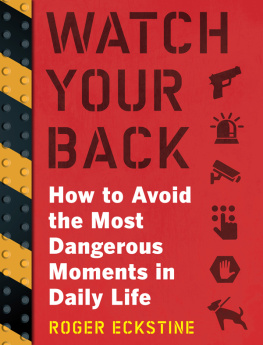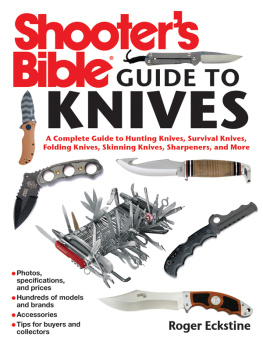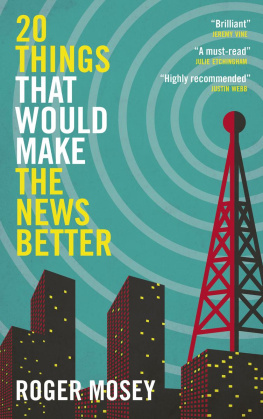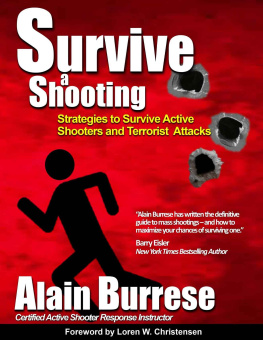Copyright 2016 by Roger Eckstine
All rights reserved. No part of this book may be reproduced in any manner without the express written consent of the publisher, except in the case of brief excerpts in critical reviews or articles. All inquiries should be addressed to Skyhorse Publishing, 307 West 36th Street, 11th Floor, New York, NY 10018.
Skyhorse Publishing books may be purchased in bulk at special discounts for sales promotion, corporate gifts, fund-raising, or educational purposes. Special editions can also be created to specifications. For details, contact the Special Sales Department, Skyhorse Publishing, 307 West 36th Street, 11th Floor, New York, NY 10018 or .
Skyhorse and Skyhorse Publishing are registered trademarks of Skyhorse Publishing, Inc., a Delaware corporation.
Visit our website at www.skyhorsepublishing.com.
10 9 8 7 6 5 4 3 2 1
Library of Congress Cataloging-in-Publication Data is available on file.
Cover design by Tom Lau
Cover images courtesy of iStockphoto
Photos by the author unless otherwise noted
Print ISBN: 978-1-5107-0271-4
Ebook ISBN: 978-1-5107-0272-1
Printed in China
There is no freedom without safety.
R. Eckstine
CONTENTS
INTRODUCTION
M y father once told me never to remember anything that wasnt important. Somehow I am just not wired that way. Its not that my mind is cluttered with things that arent important; its just that I seem to have this innate magnetism thats always looking to make connections between events or nouns (i.e., a person, place, or thing). Sometimes I have to turn things around so the polarities link up like the magnets beneath two little black and white toy dogs we used to play with. Its as if an automatic continuum is the key to my circuit board. So when I tell you that I never intended to write more than one book I am not lying. I am just a victim of my own DNA.
If you are familiar with my first book, The Shooters Bible Guide to Knives , you might recognize it primarily as a review of available knives, knife construction, and a series of overviews of different knife makers. Though unavoidably set in a specific time period, the selection of knives in the catalog section wears extremely well because, as a collection of classic and brand new offerings, theyve proven to be timeless. Perhaps thats why sales of the book continue at a steady pace.
Another reason for the continuing success of the Guide to Knives might be the one chapter where a risk was taken, unprecedented in the pages of the prolific Shooters Bible series, which goes back more than forty years. Heretofore, the Shooters Bible was primarily a presentation of available arms and accessories, but with little if any instruction put forth regarding how to use them for anything other than sporting purposes. But in the chapter entitled Folding Knives for Self Defense, we walked a thin line, offering the reader a series of techniques on how to use a common pocket-clip folding knife as a defensive tool. Based on the first day of Brian Hoffners Defensive Folding Knife Training course, there was one technique in particular that I think sums up a most basic fundamental of personal defense. With the knife unfolded and edge forward, Brian stands his ground while he demonstrates moving the knife continuously in the pattern of a figure-eight in front of his upper body. The result was a whirlpool of blades that Hoffner likens to that of a blender.
The danger is obvious but the key is that it is he (or she) who chooses to advance that asserts them as the aggressor. Presenting this information may have been risky in the context of the Shooters Bible format, but it was probably what led to being offered my next assignment.
The Shooters Bible Guide to Home Defense offers recommendations for hardening the home structure itself and building a defensive plan based on whatever tactical advantages the interior of your home might offer. There are also options in security systems and technology, learning to recognize the common ploys of home invaders, and preamble to attack as well as legal constraints and how to choose weapons to suit not just your own physical capabilities but also characteristics of the premises as well. With arson being a popular method of revenge, theres also a chapter on fire prevention and survival. But the task of building a game plan for everyday survival covered in Watch Your Back was at once more cerebral in nature and inherently more complex.
In the Guide to Home Defense , I ask the reader to imagine the view from the front window of the home as a stage and think of themselves as being the director of a high school play. If that sounds hokey, I must admit it felt corny even to me while I was writing it. But as the director you would be familiar with every one of the players, what they were supposed to do, and what was going to happen. This was a conceptual aid to make you more aware of how anything that was out of the ordinary could spell trouble, such as a strange car, a door left open, lights left on, etc. When I noted that Watch Your Back was going to be a more cerebral study than the Guide to Home Defense , and at the same time be more complex, thats because the stage on which threats to survival play out is not only more diverse but also inherently less familiar.

A keystone of Brian Hoffners Defensive Knife methodology is driving the knife in a continuous figure-eight pattern to protect the head and upper body. What makes this tactic defensive rather than offensive in nature is that it is they who choose to breach this perimeter who assert themselves as the aggressor. In these three images, Hoffner defines the central guard position and the lateral boundaries of the danger zone utilizing the Beast, a knife of his own design.
When you are at home its easy to respond to an unexpected doorbell in the middle of the day by standing away from the front door with body partially shielded by a doorframe. Its your house and home field advantage means youve worked out ahead of time just where to stand for cover or concealment, where your chain of improvised weapons and firearms can be found, retreat options, phone access, etc. But outside the home, vulnerability is as unpredictable as the world around you.
Certainly we all feel more comfortable going to the same stores and gas stations based merely on familiarity, and there is an edge in being able to recognize who belongs there and who doesnt. But the added danger is that of a false sense of security. The truth of the matter is we all go places from time to time that we are not familiar with and interact with people we dont know. The fact is, no matter where you go, most of the people you see (and the vast majority of people who see you) are strangers. And if your job is meeting the public, or takes place in public, the erosion of any type of safe distance is exponential.
This book is about the dangers we face inherent to the things we do away from the safety of home field advantage. This could mean as simple a chore as going to the gas station or activities tied inextricably to your job. Well take a look at what can be done to provide a measure of safety, but I warn you its not going to be perfect. One proposed title to this book was How to Avoid a Bad Day . But any time you are faced with danger, win or lose, its not going to qualify as what I would call a good day.











